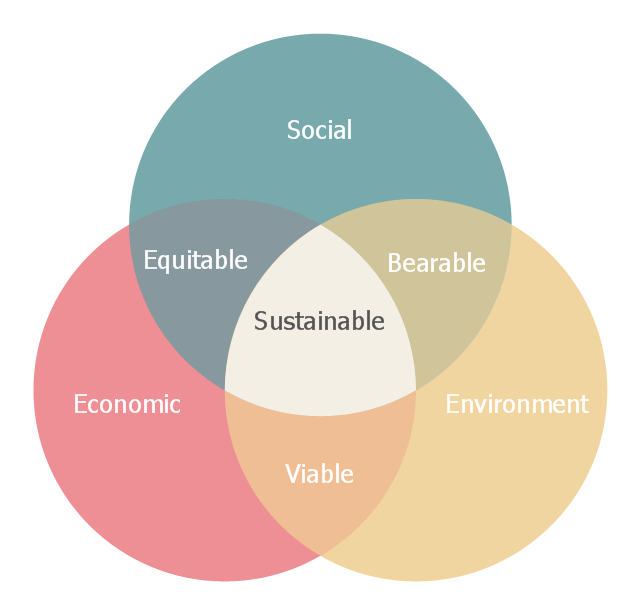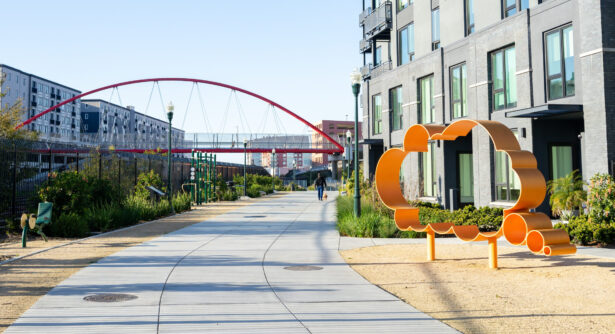
Sustainable Remediation: A Holistic Approach to Brownfield Redevelopment
Bigger than any individual checklist or concern, sustainability is a way of thinking and asking how we can do better. When we design sustainably we consider the project holistically and not siloed in economic, social or environmental considerations. From technology choice to energy or water consumption, material disposal, and hiring practices– sustainable choices are there to be evaluated in every facet of the project. We can learn from nature to implement innovative clean-up approaches and find partnerships to bring brownfields to revitalization sustainably.
Sustainable remediation is the process of identifying how we can reduce demand on the environment while considering environmental protection, economic development, and minimizing the overall burden of contamination and its clean up to society.

At the recent 2022 California Land Recycling Conference, Mital Desai with Geosyntec, Luis Navarro with Langan, and Greg Neal with DTSC approached sustainable remediation both holistically and in the individual dimensions (Economic, Social, Environmental) with practical take-aways for project management. Case studies were discussed as we reviewed how to present the value case for sustainability, common metrics, and other pointers for integrating sustainability into a project.
Using Nature to Remove Contamination:
Environmental Clean-up is not automatically environmentally friendly. Traditional clean-ups focus on removing the contamination or eliminating exposure pathways on a site. This can create collateral environmental effects that can be ignored as out of project scope. As an example, “Dig-and-Haul” a colloquial phrase for using construction equipment to excavate and haul soil to a landfill, is a common remediation technique that is often CO2 intensive, and can put heavy truck traffic in already environmentally burdened areas.
Instead of excavating the soil and moving the contamination off-site, we can use native plants (phyto-remediation), fungus (mycoremediation) or introduce/encourage other microorganisms that consume or otherwise eliminate the chemicals of concern in-situ (in the ground soil). Moreover, these methods can be less expensive and as effective as traditional methods!

Poplar trees are a popular choice for their ability to clean soil and groundwater.
Sustainable Approaches to Economic Development:
Sustainable remediation is not limited to clean-up technology choices. While Mital Desai presented an overview of innovative green remediation technologies, Luis Navarro shared a practical example from a remediation project in Jurupa, a former mining town, where soil was reused sustainably, and the overall redevelopment was planned in consideration of the needs of the local community.
Environmental remediation can be a catalyst to create jobs. Jobs can be created by the development after the successful revitalization of the property (such as 1000+ logistics/warehouse jobs in the Jurupa example). Additionally, jobs can be created in the clean-up itself with workforce development initiatives gaining more momentum in 2022 such as DTSC’s WERC program.
Including the Community in Sustainable Development:
No one knows a brownfield better than those who live with it in. Community engagement is a key part of brownfield redevelopment, and a requirement for EPA MARC and DTSC ECRG grants. Engaging the community in a culturally informed way can ensure that the end development meets social needs in an equitable and sustainable way. This topic was discussed in the CALRC session Equitable Engagement: Culturally Informed Pathways in Brownfield Revitalization.
More information and tools for how project managers can integrate sustainability into their ongoing work:
- The conversation at CALRC was filled with innovative ideas and inspiring success stories. Watch the session here:
- Consider the sourcing and end-disposal of all materials used in the lifecycle of the project, particularly soil in projects requiring large excavations or fill material. Innovative programs like the NY Clean Soil Bank are gaining momentum to facilitate circular use of soil in regional areas.
- Consider the needs of the local community in both the redevelopment lifecycle and end-use of the property. You can review slides from the CALRC panel Equitable Engagement: Culturally Informed Pathways in Brownfield Revitalization for more on this topic.
- Read the EPA Climate Smart Brownfields Manual. This 73-page manual is a guide to holistic redevelopment. The introduction reads: “Brownfield revitalization—the sustainable redevelopment of contaminated and abandoned properties—can support community efforts to become more resilient to climate change impacts by incorporating adaptation strategies throughout the assessment, cleanup and redevelopment process. This manual addresses how communities can incorporate climate change adaptation and mitigation strategies into their brownfield revitalization projects.”
- Bond creative partnerships for initiatives such as solar redevelopment, land stewardship, and pilot studies for innovative technologies.
- Understand that sustainability is not a checklist, but an important process of asking how we can do better and engaging team members regularly in conversations around sustainability.
- Access your state resources here for more site specific information such as the following useful decision matrix (Greener Cleanups: How to Maximize the Environmental Benefits of Site Remediation) when looking at clean-up design.





